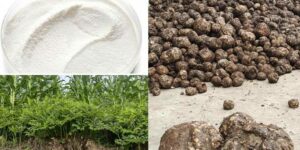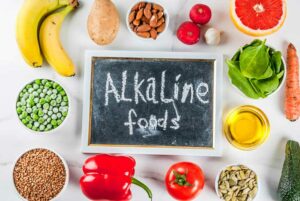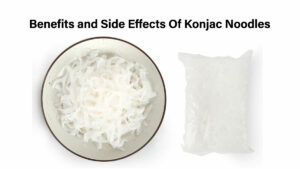With increasing awareness of gluten sensitivity and celiac disease, uncovering safe and enjoyable dining options is vital. One question on everyone’s lips: Are konjac noodles gluten-free?
The simple answer is, yes, it is gluten-free. Konjac food is made out of konjac flour which contains no gluten at all. But there is more behind this simple answer. In fact, we need to know more about gluten allergy so that we can address the problem better.
Understanding Gluten-Free Diets
To understand gluten-free diets, we need to know what is high gluten sensitivity or gluten allergy. It will be easier for us to get the whole picture when we imagine the journey of John, a 35-year-old engineer. Let’s create a scenario about how John finds the symptoms and how to deal with them:
-
- Emergence of Symptoms: John starts to experience recurring gastrointestinal discomfort after meals. The symptoms include bloating, diarrhea, and stomach cramps. At first, he dismisses these symptoms as occasional digestive issues and tries to manage them with OTC medication, hoping the symptoms will go away.
-
- Symptoms Persist: However, over time, the symptoms become more frequent and severe. He also notices that he’s feeling tired all the time, he’s losing weight without trying, and he is often in bad moods. These changes begin to impact his work and personal life.
-
- Seeking Medical Help: John finally decides to consult with a doctor. He shares his symptoms, diet habits, and concerns. The doctor takes note of the pattern of his symptoms – they seem to worsen after meals, particularly those rich in bread and pasta.
-
- Tests and Diagnosis: Given the symptoms and their relationship with food, the doctor suspects a possible gluten-related disorder. Blood tests are ordered, which indicate the presence of certain antibodies associated with celiac disease. To confirm the diagnosis, an endoscopy and biopsy of the small intestine are performed, which show damage consistent with celiac disease. Alternatively, if the test results for celiac disease are negative but symptoms persist, the doctor might suggest a trial elimination of gluten from the diet to check if symptoms improve, pointing towards non-celiac gluten sensitivity.
-
- Management and Follow-up: Following the diagnosis, John is referred to a dietitian who helps him transition to a gluten-free diet. He is educated about gluten-containing foods and cross-contamination risks. After several weeks on the new diet, he noticed a significant improvement in his symptoms. Regular follow-up visits are scheduled with his healthcare provider to monitor his condition and ensure that his intestines are healing.
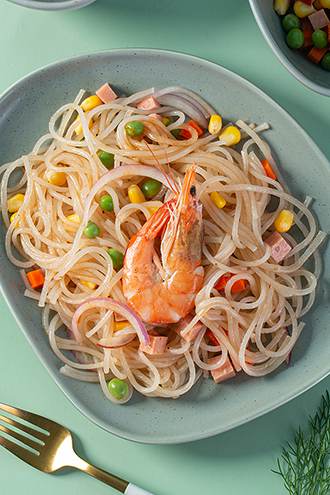
Gluten is a protein found in wheat, barley, and rye, which can cause adverse health effects for those with gluten intolerance or Celiac disease. Going gluten-free isn’t just a lifestyle choice for these individuals—it’s a must for their well-being. Gluten-free diets can alleviate symptoms, promote intestinal healing, and prevent complications associated with these conditions.
If you find out that you may have a gluten allergy, do not panic. A lot of people have similar symptoms, some of them are celebrities for example Novak Djokovic, Billy Bob Thornton, Elisabeth Hasselbeck, Jennifer Esposito, Ryan Phillippe, and the list goes on.
Another reason you should not panic is that we do have solutions for gluten allergy. Take Novak Djokovic for instance, one of the greatest tennis superstars says he performs better after trying a strictly gluten-free diet because of his gluten allergy.
One option you can have is to introduce it into your diet.
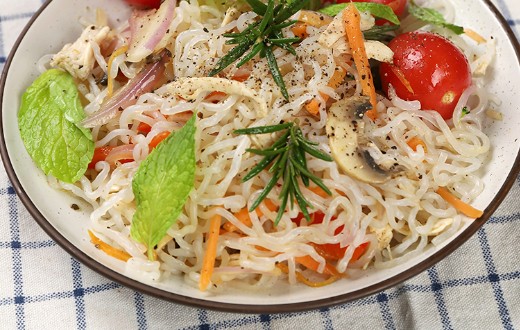
What Are Konjac Noodles?
Konjac noodles, also known as shirataki noodles, hail from Japan. They’re made from the root of the konjac plant and are primarily composed of a dietary fiber called glucomannan. With a jelly-like consistency and low-calorie count, they are a popular choice for those aiming for weight loss and improved gut health.
How to Choose Gluten-free?
The great news for gluten avoiders is that noodles are naturally gluten-free. Their basic ingredient, konjac root, does not contain any gluten. However, cross-contamination can occur if they’re manufactured in facilities that also process wheat, barley, or rye. Hence, it’s essential to look for labels confirming that your noodles are certified gluten-free to ensure they’re a safe choice.
Incorporating Noodles into a Gluten-Free Diet
Konjac noodles’ versatility makes them an excellent base for a range of gluten-free dishes, from hearty stews to light salads. Additionally, there are many other gluten-free pasta alternatives such as rice noodles, quinoa pasta, and lentil pasta to add variety to your meals. It’s important to note that while these are excellent gluten substitutes, a balanced diet should include a variety of foods to meet all nutritional needs.
For those living with gluten sensitivity or Celiac disease, the importance of a trustworthy gluten-free diet cannot be overstated. Fortunately, it appears to be a healthy, safe, and versatile gluten-free choice.
If you know someone grappling with gluten intolerance, share this article with them—these noodles might be the perfect addition to their gluten-free recipe book. Do you have a favorite gluten-free recipe featuring konjac noodles?
By staying informed and creative in the kitchen, maintaining a gluten-free lifestyle can be not only manageable but also enjoyable. And Konjac noodles? They’re a certified win on the gluten-free front!


